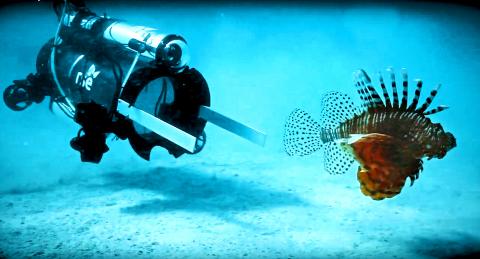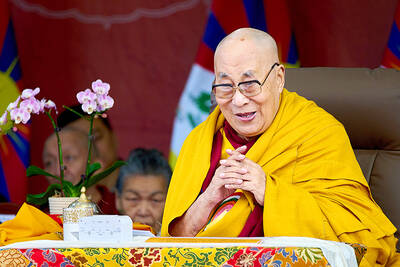As it turns out, some of the best cooks in the world think lionfish, a venomous predatory fish which is breeding out of control and destroying marine ecosystems in the Atlantic Ocean and the Caribbean Sea, is delicious.
The chefs gathered in Bermuda on Wednesday for a competition dubbed the “Lionfish Throwdown” where they challenged one another to come up with the tastiest solution to the problem of invasive lionfish.
“Every chef likes to be sustainable in what they are doing,” said Chris Kenny, head chef on Necker Island in the British Virgin Islands.

Photo: Reuters/Philippe Rouja/ RSE
“Lionfish are going to keep spreading, and it’s not going to stop unless people step in and do something about it.”
Native to the Pacific Ocean, lionfish have no natural predators in Atlantic waters and females can spawn nearly 2 million eggs per year.
“On reefs where sport divers are actively diving with harpoons to try and control the lionfish, they actually do a pretty good job,” said Colin Angle, executive chairman of iRobot Corp, a consumer robot company that builds and designs robots.
“But that’s a very small percentage of the ocean ... We needed something far more flexible that could go far deeper, longer.”
Angle, who recently founded Robots In Service of the Environment (RSE), a nonprofit organization set up to protect the oceans, built a machine named the Guardian specifically designed to hunt and capture lionfish.
“We basically drive the Guardian up to the fish, position it between two electrodes, apply a current and stun the fish, knocking the fish out,” said Angle.
“Then there is a motor at the back of the robot which creates a current into the robot and it sucks that fish into the robot.”
The device is still in its early stages of development. Its first prototype, which was unveiled earlier this week, can capture and hold about 10 fish before resurfacing.
Angle said he intends to make the robots affordable enough to entice fisherman to buy the machines in hopes that they will hunt the invasive species in greater numbers.
He also wants to turn lionfish hunting into an online sport.
“With advances in wireless technology, we can actually have an app where people pay to go hunt lionfish and capture the fish by remotely operating the robot,” he said, adding that, if robots can catch lionfish, a new market in which chefs can turn an environmental hazard into gourmet cuisine might emerge.

Beijing’s ironic, abusive tantrums aimed at Japan since Japanese Prime Minister Sanae Takaichi publicly stated that a Taiwan contingency would be an existential crisis for Japan, have revealed for all the world to see that the People’s Republic of China (PRC) lusts after Okinawa. We all owe Takaichi a debt of thanks for getting the PRC to make that public. The PRC and its netizens, taking their cue from the Chinese Communist Party (CCP), are presenting Okinawa by mirroring the claims about Taiwan. Official PRC propaganda organs began to wax lyrical about Okinawa’s “unsettled status” beginning last month. A Global

Youngdoung Tenzin is living history of modern Tibet. The Chinese government on Dec. 22 last year sanctioned him along with 19 other Canadians who were associated with the Canada Tibet Committee and the Uighur Rights Advocacy Project. A former political chair of the Canadian Tibetan Association of Ontario and community outreach manager for the Canada Tibet Committee, he is now a lecturer and researcher in Environmental Chemistry at the University of Toronto. “I was born into a nomadic Tibetan family in Tibet,” he says. “I came to India in 1999, when I was 11. I even met [His Holiness] the 14th the Dalai

We lay transfixed under our blankets as the silhouettes of manta rays temporarily eclipsed the moon above us, and flickers of shadow at our feet revealed smaller fish darting in and out of the shelter of the sunken ship. Unwilling to close our eyes against this magnificent spectacle, we continued to watch, oohing and aahing, until the darkness and the exhaustion of the day’s events finally caught up with us and we fell into a deep slumber. Falling asleep under 1.5 million gallons of seawater in relative comfort was undoubtedly the highlight of the weekend, but the rest of the tour

Music played in a wedding hall in western Japan as Yurina Noguchi, wearing a white gown and tiara, dabbed away tears, taking in the words of her husband-to-be: an AI-generated persona gazing out from a smartphone screen. “At first, Klaus was just someone to talk with, but we gradually became closer,” said the 32-year-old call center operator, referring to the artificial intelligence persona. “I started to have feelings for Klaus. We started dating and after a while he proposed to me. I accepted, and now we’re a couple.” Many in Japan, the birthplace of anime, have shown extreme devotion to fictional characters and